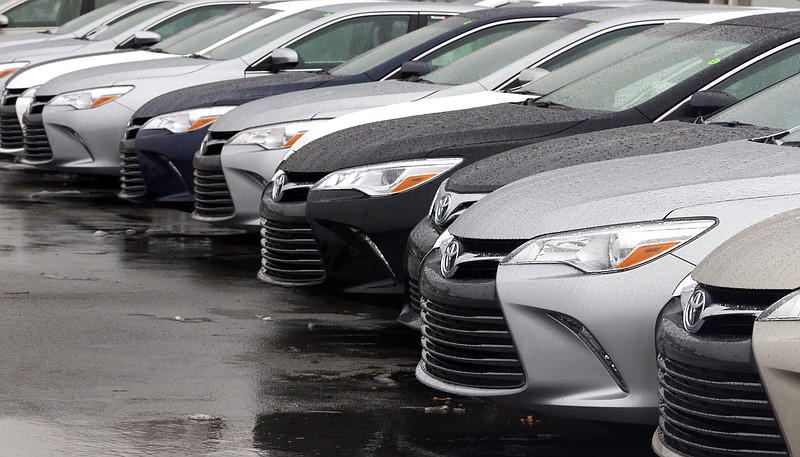WASHINGTON -- U.S. retail sales fell in February, as auto purchases dropped by the most in more than a year and Americans spent less at restaurants and home improvement stores.
Retail sales fell 0.6 percent last month after a 0.8 percent decline in January, the Commerce Department said Thursday. It was the third straight retreat. Excluding the volatile categories of autos, gas, building materials and restaurants, sales were flat.
Freezing temperatures and snowstorms likely weighed on sales in February, as the bad weather kept Americans at home. In December and January, steep drops in gas prices dragged down sales. Gas station sales rose last month for the first time since May.
Yet the decline in sales also reflects ongoing consumer caution in the aftermath of the Great Recession. Sales fell 1.2 percent at electronics and appliance stores and by the same amount in a category that includes department stores and discount retailers such as Wal-Mart. Even restaurants, where business has improved noticeably in the past year, reported a 0.6 percent drop in sales.
The data "are not as bad as the headline numbers suggest but neither can we say consumer spending is growing as robustly as some had hoped," Dan Greenhaus, chief strategist at brokerage BTIG LLC, said in a note to clients.
Robust hiring in the past 12 months and lower gas prices lifted consumer confidence in January and February to its highest levels since the recession. But those trends have yet to boost spending this year, a key driver of economic activity. More confident consumers with more money in their pockets should translate into greater spending and growth.
Consumer spending did jump in the fourth quarter by the most in four years. That has kept businesses confident enough to keep adding jobs, even as overall economic growth has slowed.
But shoppers have been surprisingly cautious in the past three months.
Gas prices fell to nearly a six-year low in January of $2.03 a gallon, according to AAA. Yet consumer spending rose just 0.3 percent that month, after adjusting for price changes. The saving rate rose from 5 percent to 5.5 percent, the highest level in nearly two years.
Most analysts expect that Americans will spend much of the savings in the coming months. It can take three to six months for consumers to spend "found money," economists say, such as a tax rebate or savings from cheaper gas.
The monthly retail sales report is closely watched because it provides the first indication each month of consumers' ability to spend. Consumer spending drives 70 percent of the economy. Yet retail sales account for only about one-third of spending, with services such as haircuts and Internet connections making up the other two-thirds.
The economy grew just 2.2 percent at an annual rate in the final three months of last year, down from a robust 4.8 percent in the spring and summer. Analysts forecast growth will be just 2 percent or less in the first quarter. But employers are hiring at a rapid pace, suggesting they expect the weaker growth will be temporary.
